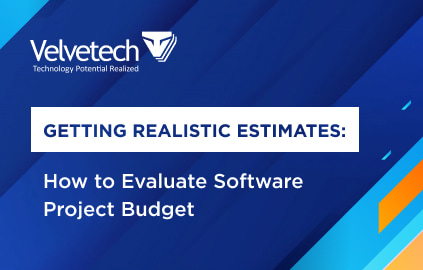Carelessness and inaccuracy — something that laboratories are unable to afford. When we visit a lab or have our tests done at a hospital, we anticipate accurate results essential for correct diagnosis and subsequent treatment. Naturally, we also expect the process to be efficient and safe.
The cost of an error may be incredibly high, and laboratories strive to minimize even a small probability of inaccuracy. Despite all the complexities they face on the way: huge data flow, inventory and equipment management, industry regulatory standards variability, and many more.
And that’s where a Laboratory Information Management System (LIMS) comes into play and helps to address the majority of challenges experienced by laboratories worldwide. In this article, let’s explore how this kind of healthcare tech solution mitigates risks of errors, streamlines laboratory workflows, and improves patient engagement.
Importance of LIMS in Modern Laboratory Operations: Brief Overview
What is a LIMS system and why laboratories can’t do without it? Well, it’s a specialized software tailored for laboratory use, streamlining and organizing internal processes, and data management. This software aids in the extraction, analysis, storage, and organization of laboratory data. Below, we go over the major advantages of laboratory information management systems.
Centralized Lab Data Storage
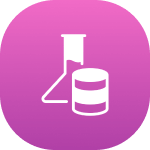
Centralized data storage provided by LIMS enables quick access to laboratory information. This helps lab staff find necessary details swiftly, exchange data seamlessly, and abandon unnecessary paperwork.
Higher Level of Control Over Lab Test Quality
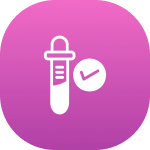
LIMS helps to perform better control over equipment performance and each step of the laboratory process, starting from material sampling and ending up with obtaining a test result. Built-in quality control, implementation of AI, and Computer Vision ensure full transparency of lab operations.
Compliance with Regulatory Requirements and Industry Standards

LIMS incorporates tools for regulatory requirements monitoring. This helps laboratories continuously track possible changes and maintain compliance with industry standards and regulations.
Lab Workflow Automation
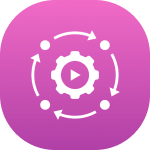
Sample handling, lab test results recording, report generation — all these routine tasks can be automated with LIMS. Therefore, the software helps to alleviate staff workload and increase overall lab efficiency.
Laboratory Staff Errors Minimization
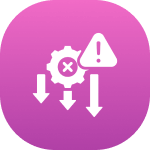
Software is not a human and doesn’t feel tired or overwhelmed, which means that systems are not prone to errors. This is the reason why it’s better to delegate some routine tasks, such as data input, validation, and analysis to a system. It’s especially relevant if we speak about laboratory testing, where precision is of paramount importance.
When Your Lab Has Outgrown SaaS: Benefits of Custom LIMS Over Cloud Solutions
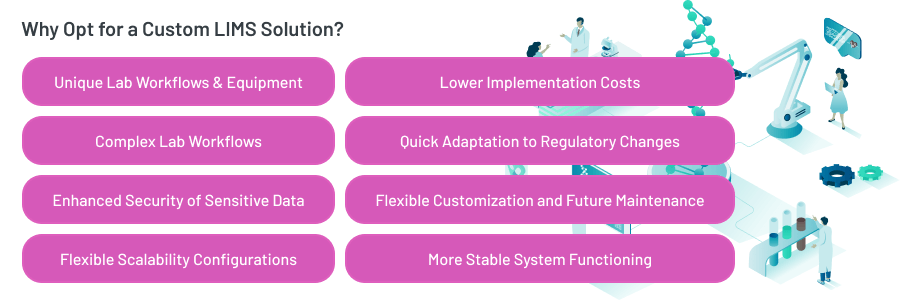
Nowadays, multiple SaaS LIMS solutions are available on the market. It may seem easier to purchase a subscription, start using the system right away, and not tinker with custom software.
However, before you do that, it’s better to grasp the limitations and risks of SaaS. In this section, let’s discuss the main advantages of custom LIMS over cloud-based systems so you can make an informed decision.
Supporting Unique Lab Workflows & Equipment
If your laboratory conducts common tests, such as general blood tests or analyses for hormones — a SaaS solution may be a good match here. But what if your lab operates in a specific area, deals with scientific research, offers rare analyses, or has special workflows related to data processing?
99% that capabilities of cloud solutions sharpened for more typical and simple tasks won’t be enough, and it’s better to turn your eye to custom LIMS software.
Handling Complex Workflows Inherent to Large Hospitals and Labs
Large hospitals represent a complex organism with multiple intricate workflows that must be maintained in sync. Plenty of disparate systems, differentiation of access levels, and complex inner workflows — not that these factors hinder the adoption of a cloud system.
However, you should keep in mind that integrating a SaaS solution into such a complex ecosystem may not be as easy as pie to tackle. Implementation efforts and costs will be compatible with the development of a custom laboratory information management system.
But the crucial difference is that custom software will be tailored to your specific needs right away, while a cloud solution may require some customization and lack functionality that is critical for you.
Ensuring Sensitive Data Security and Control
Laboratories and hospitals operate sensitive data and strive to exclude even a minor possibility of a breach. Since cloud solutions are potentially more susceptible to hacking, medical facilities and labs adopt custom LIMS more willingly.
Discover how to Safeguard Healthcare Data
Another aspect worth mentioning is that SaaS LIMS software providers have full access to clients’ data and may share them with third-party organizations, such as insurance enterprises, pharma companies, startups, etc.
Sure thing, these medical data will be aggregated and anonymized, but this doesn’t mean that laboratories and medical facilities would want to share sensitive data even under such conditions.
The last point to mention here is a technical part of the issue. In most cases, hospitals and large laboratories use an Intranet and have no access to the Global Network. This aspect also imposes restrictions on SaaS LIMS usage, since stable Internet access is crucial for system operation.
Learn more about SaaS Security Risks
Scalability Configurations
As a rule, cloud providers claim to be highly scalable and handle high loads with ease. However, page loading, request processing, and data exchange may turn out to be worse than expected, which is critical for medical facilities. If you are not ready to tolerate poor system usability, it’s better to opt for a tailor-made LIMS software solution.
Lower Costs in the Long Run
How much staff does your hospital or laboratory have? How many tests do you conduct per day, per week, or year?
These figures are directly proportional to the costs your potential cloud provider will offer for system usage. Say, your staff counts 1,000 employees, and you conduct 100 tests per day. The license price is calculated by the number of users and data volume you operate with.
And it’s not that you pay for the license once and use the solution happily ever after. No, you have to pay this amount monthly. Broadly speaking, you get hooked on the cloud service and have no choice but to pay even if the provider alters the price.
And don’t forget that the license is not everything — all possible integration, configuration, and staff training expenditures also lie on your shoulders.
In the case of tailor-made LIMS software solutions, you pay only once for development and a relatively affordable amount for system maintenance. Therefore, if you have a large-scale laboratory, expenses for a custom system may turn out to be much less in the long run. But as a pleasant and important bonus, you receive a system tailored to your specific needs.
Project Estimates
Watch our webinar to learn about the practical ways to evaluate your software project estimates.
Quick Adaptation to Regulatory Changes
The healthcare industry has multiple regulatory requirements and standards, such as HIPAA, GDPR, HL7, ISO-17025, and many more. Although SaaS solutions are positioned as fully compliant, in reality, that’s not always so.
The reason is that regulatory requirements change, and sometimes, it happens really fast, like in the case of the Coronavirus outbreak. SaaS providers may not be able to keep up with all the changes and carry out compliance with new standards promptly. Therefore, a client has to wait for the vendor to proceed with necessary changes, which may take quite a long time.
If you deal with bespoke LIMS software, compliance issues are resolved relatively swiftly. If regulatory changes alter, the vendor evaluates the scope of changes, plans their implementation, and delivers accordingly.
The biggest advantage of cooperating with a custom software development company is that they can respond to alterations quickly and modify the system without delays.
Flexible Customizations & Further Maintenance
Purchasing out-of-the-box LIMS software solutions, clients shouldn’t count on the fact that their functionality would cover all their needs in full. More often it happens that expectations diverge from reality.
Say, you’ve purchased a SaaS solution, integrated it with existing healthcare systems, and noticed that it didn’t work as you had expected or lacked functionality that was critical for you.
There are two ways of problem resolution. First — you contact the vendor and ask if they can implement the necessary changes. Of course, they will agree, but implementation may take years.
Are you not willing to wait? There exists another option: you may offer to pay an impressive amount for prompt adjustments, and some flexible vendors may go for it. Therefore, the client turns out to be in a trap and has to use the purchased software given incurred costs and efforts for system adoption.
With bespoke LIMS solutions, this issue disappears by itself. By purchasing custom software, you also budget system maintenance. This empowers you to pay for further improvements rather than for the right of use like in the case of SaaS. Eventually, it’s cheaper and delivers more value in the long run.
Stable System Functioning Even in Case of Software Development Team Change
There’s always a risk that a company may wind down their business. In the case of a custom software development service provider — this will not entail such serious consequences, since you may continue using the developed system and hire another team for maintenance.
Things are different if we speak about cloud-based LIMS. Just imagine, your laboratory purchased a license that costs a fortune, invested in all possible integrations with lab equipment and hospital systems, and conducted time-consuming workshops to train your staff. And one day, your SaaS provider quits the business, your lab remains without the software, and all the processes are literally paralyzed.
Find out more about Find out more about
Key Features of Custom LIMS Worth Mentioning
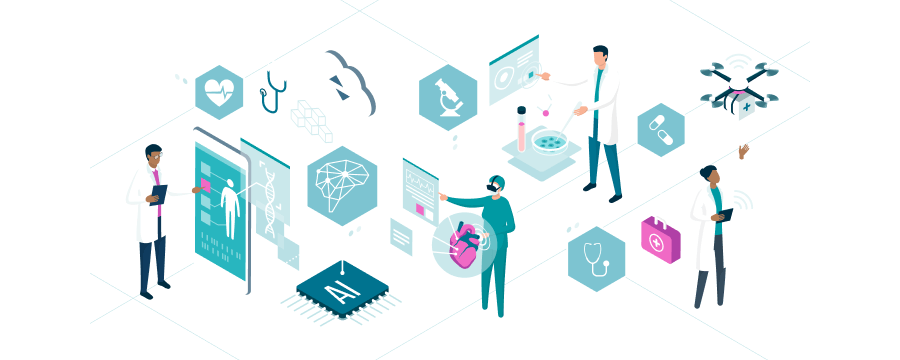
After considering the benefits of a custom LIMS application over a SaaS option, let’s smoothly go to the components a good lab information management system must include. Below are some features we can’t help but mention.
LIMS Integration with Lab Equipment and Existing Information Systems
All lab tests imply the usage of equipment that processes samples and outputs results. Of course, nothing prevents you from transferring these figures to the system manually, but we all remember that humans are inclined to make mistakes more often than machines.
Having integrated your healthcare LIMS with laboratory equipment, data are transferred to the system directly, without human intervention. This allows you to kill two birds with one stone — reduce labor efforts and mitigate human error risks.
Besides LIMS integration with lab equipment, synchronization with existing information systems is also essential. Integration with hospital systems, EHRs, and regulatory databases helps to ensure seamless data exchange between departments, centralize data management access, and maintain well-coordinated work of the entire medical facility.
Read more about Hospital Management Systems
Built-In Quality Control
The cost of mistakes in healthcare is extremely high and goes far beyond the material aspect. When human life is at stake — there’s no room for errors, and laboratories strive to maintain the highest quality standards and guarantee the reliability of tests.
That’s why built-in quality control is a must-have feature if we speak about a LIMS application. This may include sample management, lab equipment performance monitoring, deviation management, automated alerts and notifications, and more.
Artificial Intelligence & Computer Vision
To enhance the quality of laboratory processes and minimize the probability of errors, labs tend to use the capabilities of Artificial Intelligence. Laboratory staff can use it for:
- Data analysis. To detect anomalies and deviations in large datasets.
- Predictive analytics. To forecast trends and predict potential failures, like laboratory equipment malfunctions.
- Better visibility of health data. To extract data from multiple information systems and equipment and transform them into insightful reports in several clicks.
People may forget, overlook, or mix up something. These risks can also be mitigated with Computer Vision.
For example, you have a particular order of actions when handling biochemical blood tests. With Computer Vision, your system will record each action performed by a lab technician, and AI algorithms will subsequently analyze them for errors.
Read about Artificial Intelligence in Healthcare
Biohazard Samples Handling
Laboratories and hospitals may also deal with biohazard samples. Viruses, radioactive substances, and dangerous reagents are exactly things that require particular caution.
Storage conditions, procedure of handling and disposal — all these actions must be performed in compliance with specific regulation requirements defining the way of dealing with such materials.
If your laboratory is focused exactly on what we described above — your LIMS must encompass this aspect, too. Even if it’s not a specific module, at least a set of requirements defining the procedure of handling biohazard materials must be covered by your LIMS.
Patient Data Access
Nowadays, patients expect quick and quality healthcare services. Just imagine the facial expression of a person who heard that they have to physically arrive at a lab or a clinic to pick up test results! Sure thing, a patient doesn’t want to waste time for that and expects immediate access to their data with several clicks.
Of course, laboratories can’t afford to ignore these expectations and strive to find ways to deliver health data not only to a doctor but also to a patient. This can be done through patient portals, mobile apps, or third-party services storing laboratory data.
For example, LIMS may have a custom API for integration with a portal, or a module representing a user mobile app for patients.
We also shouldn’t forget that health data may come not only from laboratories but also from patients. For example, a patient with diabetes has a glucometer to monitor their sugar levels continuously. These data are transferred to a mobile app for further aggregation, so a patient can easily track dynamics and monitor their vitals.
Discover more about the Consumerization of Healthcare
Swinging Between Custom LIMS and SaaS
A high-quality LIMS helps laboratories adhere to established industry standards, improve internal processes, and conduct tests more efficiently and accurately. However, before adopting a system, it’s crucial to assess your inner laboratory processes and determine which type suits you best — a SaaS solution or a custom one.
Custom solution development requires time and a substantial initial budget. However, as a result, you will have a system that perfectly fits your laboratory’s needs.
Our team has extensive experience in both healthcare software development and building pharmaceutical tools to help you design a solution that streamlines lab processes without compromising the quality of tests. Contact us, and we’ll be happy to assist you!
In the next article, we’ll discuss the major steps of LIMS development, key challenges you might encounter during system implementation, and how this kind of software will evolve. Stay tuned!
